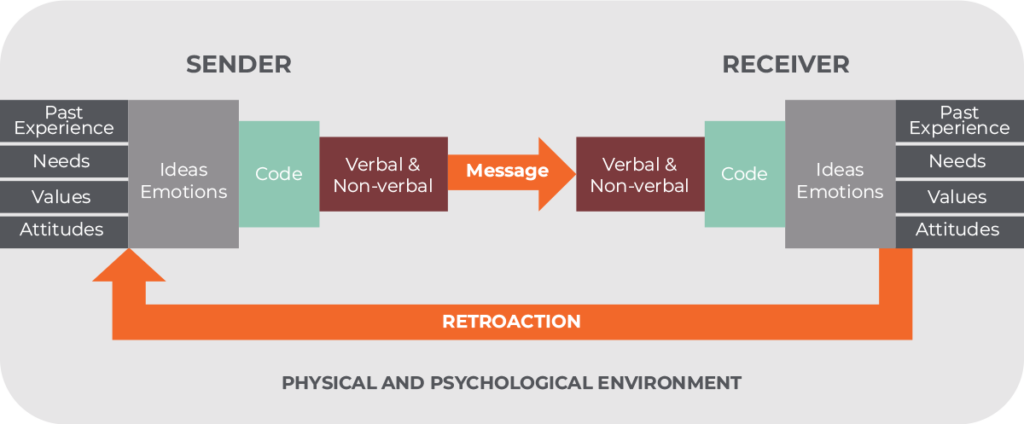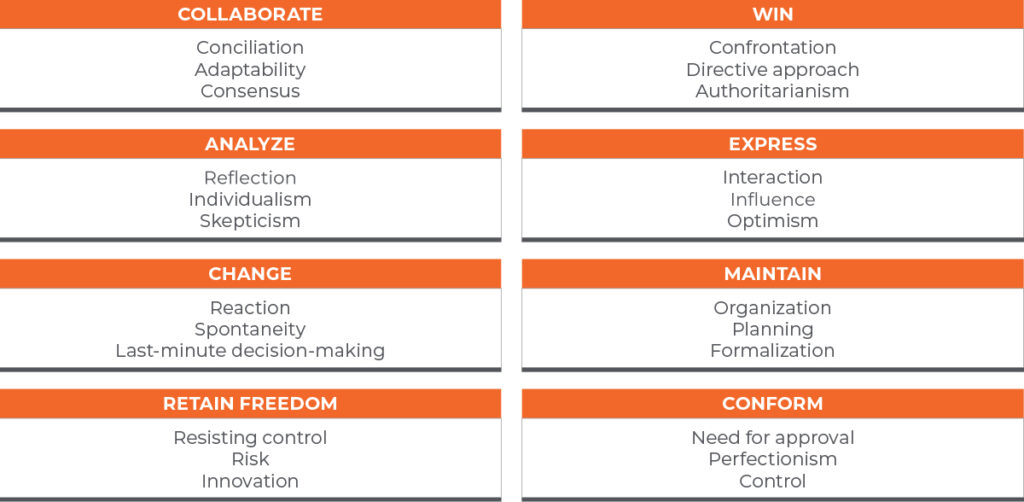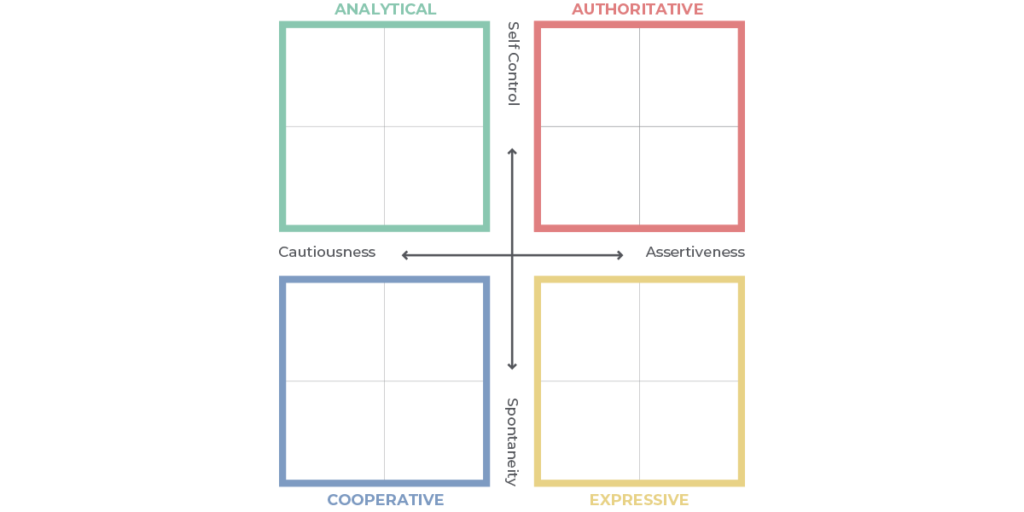The importance of communication in business and how the MPO COMMUNICATION model can help you
Whether it is in our relationships with our colleagues, our customers or our supervisors, problems related to effective communication are common. A large part of our working day is made up of interpersonal exchanges. Sometimes these are not optimal or even completely deficient. Unfortunately, too many companies lack concrete means to correct the situation.
MPO Communication is a program that helps companies to become aware of the importance of their communication style and its impact on the organization’s performance.
The program is ideal to acquire knowledge on the different communication dynamics in order to optimize exchanges within the company.
MPO COMMUNICATION OBJECTIVES
MPO Communication has been developed around five specific learning objectives:
- Realize the benefits of more effective interactions;
- Measure the influence of your behaviors on your interactions;
- Learn about different communication styles and how to recognize them;
- Take greater control over the consequences of your interactions through adaptability;
- Learn to adapt your communication style to the people around you.
Sender – Receiver
Whenever you communicate with someone, there is a dynamic process that takes place with a relationship of sender and receiver. In order to ensure full understanding, the receiver must let the sender know that he or she has understood, or at least demonstrate that he or she is trying to do so. For example, some people will use phrases such as “If I have understood correctly…”.
During a communicative exchange, the sender first lives through experiences, he is aware of his needs, his values and his attitudes. This generates ideas and emotions that are coded. His verbal and non-verbal communication will then transmit the message.
When the receiver receives the message, we first see his verbal and non-verbal, these will then be his code, which will generate ideas and emotions according to his experiences, his needs, his values and his attitudes. He will then give feedback and become the sender in turn, and so on.
Through this communication process, some behaviors will appear on both sides.

UNDERSTANDING OF BEHAVIORS
Personality traits have a major influence on our behavior. Generally speaking, an individual’s personality traits remain relatively stable throughout his or her life.
A behavior is the result of a reaction to a given situation based on our personality and value system.
In some cases, a behavior may be harmful in one situation, while it may be appropriate in another.
UNDERSTANDING OF NEEDS
To understand behavior, we must first understand the notion of need.
Very often, the behavior of an individual triggered by a situation is the best way for him to meet his needs.

THE MPO COMMUNICATION MODEL
By choosing the MPO Communication solution, you will benefit from various measures that will allow you to produce a portrait of each of your employees. They will answer the MPO questionnaire, a validated psychometric instrument, to collect personality data.
Personality traits related to communication and interactive behaviors are transferred on 2 axes in a 4 or 16 quadrant window.
The four main dynamics presented in the MPO Communication model come from the combination of two axes.
- The horizontal axis: measures an individual’s need for affirmation or caution
- The vertical axis: measures the degree of spontaneity or control in one’s relationships
These two components have an influence on our interpersonal relationships.
The MPO questionnaire will then determine your position in the quadrant according to the intensity of your needs on each axis.
Here are the four main combinations of the MPO COMMUNICATION model:
- High affirmation and low spontaneity (control): the AUTHORITATIVE, focused primarily on results
- Low affirmation (caution) and low spontaneity (control): the ANALYTICAL, task-focused and analytic
- Strong assertiveness and spontaneity: the EXPRESSIVE, people-oriented, impulsive and persuasive
- Low affirmation (caution) and high spontaneity: the COOPERATIVE, concerned about people, helpful and understanding.

AFFIRMATION AXIS VS. SPONTANEITY AXIS
The affirmation is most easily seen in the way people communicate verbally and non-verbally, as well as in the pace at which they affirm themselves. It is often noticed that in a team, some people react quickly and take the lead, while others are more systematic in their reactions and take more care in their relationships.
This axis measures the way someone takes a position and defends it.
More cautious (less affirmative) people prefer to avoid making decisions if they consider them risky. In addition, they will be more comfortable with known and proven ways of working, while an affirmative person finds these situations challenging.
With regard to the spontaneity axis, the higher an individual is on this axis, the more they will be preoccupied with tasks and complete achievements and the less they will let their feelings show in their behaviors. On the other hand, the lower an individual is on this axis, the more comfortable they will be with relational processes and the more easily they will express their emotions.
This axes measures the level of expression of emotion in interpersonal behavior.
You can download a model of a MPO Communication report.
BE AWARE OF PERCEPTIONS
As the saying goes, we see others through our own glasses! The way we evaluate the behavior of others is often influenced by our own individual perception. Remember that a person may behave differently at work than in their personal life. Keep in mind that there are differences and that everything is relative.
The goal of behavior classification is to have a more accurate and objective understanding of behaviors. With a better understanding, adaptation is easier and relationships are more balanced. The goal is to move away from a judgmental approach and replace it with a neutral understanding of behaviors.
Contact us to learn more about MPO Communication.

